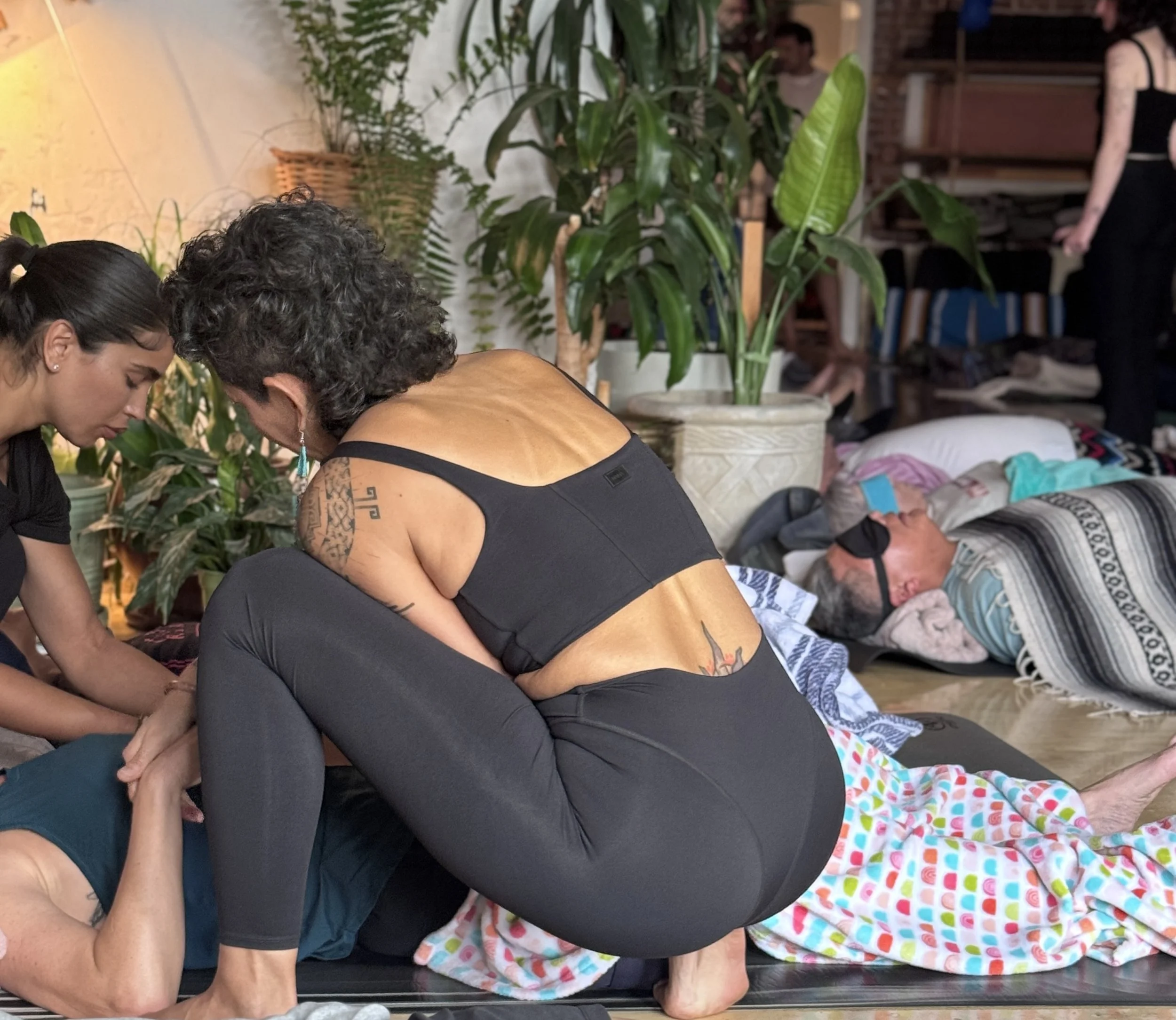Tetany in Breathwork: What It Is and How to Work With It
If you’ve explored breathwork, you may have noticed some surprising sensations in your body. One of the most common and often most misunderstood is something called tetany. It can feel a little strange, even alarming at first, but once you understand what’s happening, you’ll see that it’s a natural part of the process for many people.
What Is Tetany?
Tetany is the term used to describe involuntary muscle contractions that sometimes occur during breathwork. It often shows up as:
Tingling or numbness in the hands, feet, or face
Cramping or stiffness in the hands (sometimes called “lobster claws”)
A sense of tightness in the mouth or jaw
It can look and feel unusual, but it’s usually temporary and passes quickly.
Why Does Tetany Happen?
The breath changes our internal chemistry. When we breathe more deeply or rapidly than usual, the levels of carbon dioxide (CO₂) in the blood shift. This alters the balance of oxygen, pH, and calcium in the body, which can cause nerves to fire more easily, leading to tingling and muscle contractions.
From a nervous system perspective, tetany can also reflect a surge of energy moving through the body as it releases tension or processes stored stress.
What Tetany Can Teach Us
Instead of thinking of tetany as a problem, it can be helpful to view it as a signal. Your body is showing you where it may be holding on—whether that’s physical tightness, emotional guarding, or simply the nervous system recalibrating.
Everyone’s body responds differently. Some people never experience tetany at all, while others notice it frequently. Neither is better or worse; it’s simply part of your body’s unique way of processing breathwork.
How to Work With Tetany
If tetany arises in your practice, here are a few ways to approach it:
Seek support: Especially in longer or deeper breathwork sessions, having a skilled, trauma-informed facilitator can make a world of difference.
Stay curious: Notice the sensations without judgment. Sometimes just observing can soften the intensity.
Ground yourself: Wiggle your fingers and toes, gently stretch, or place your hands on your body to remind yourself you’re safe.
Soften the breath: Slow down, return to nasal breathing, or take a gentle pause. Often, tetany eases within a few moments.
Closing Thoughts
Tetany can feel odd, but it’s not something to fear. With understanding and the right tools, it becomes just another part of the rich landscape of breathwork. Instead of resisting it, you can learn to meet it with curiosity and compassion—allowing your breath to take you deeper into connection with your body and yourself.

